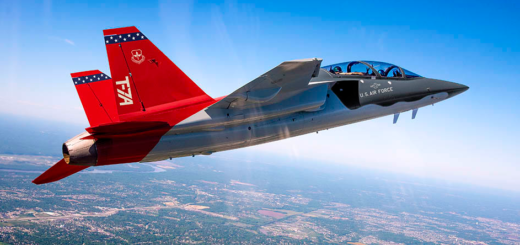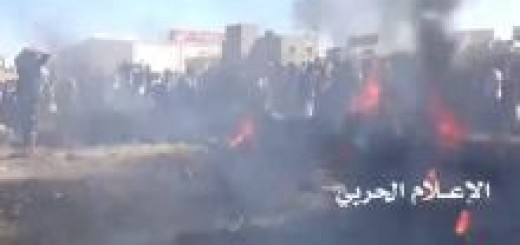KAI Poised to Secure Support Contract for Philippine FA-50PHs

{loadposition bannertop}
{loadposition sidebarpub}
The Philippines is set to sign a performance-based logistics (PBL) contract with Korea Aerospace Industries (KAI) to support its fleet of FA-50PH light combat aircraft. This deal marks a first for KAI, as it is the first PBL contract awarded for an aircraft exported by South Korea. KAI has received a notice of award for this task, representing a new milestone in the defense cooperation between South Korea and the Philippines.
Follow Army Recognition on Google News at this link
Introduced to the Philippines in 2013, the FA-50 Fighting Eagle is equipped with advanced ejection seats, sophisticated weapons control systems, and long-range detection and tracking capabilities (Picture source: PAF)
The FA-50 is a light combat aircraft developed by KAI, derived from the T-50 Golden Eagle, originally designed as a supersonic advanced trainer and light attack aircraft. It is in service with several air forces, including those of South Korea, Poland, Malaysia, Indonesia, the Philippines, and Thailand. A cost-effective and capable platform, the FA-50 offers performance levels comparable to higher-end fighter aircraft.
Equipped with advanced systems, the FA-50 features a tandem cockpit for two crew members, night vision imaging capabilities, modern avionics with inertial navigation and GPS, and a multifunction radar. It can carry up to 4.5 tons of weapons, including AIM-9 Sidewinder air-to-air missiles, AGM-65 Maverick air-to-ground missiles, JDAM precision-guided bombs, and a 20mm internal cannon. Powered by a General Electric F404-GE-102 turbofan engine, the aircraft can reach a maximum speed of Mach 1.5. The FA-50PH variant used by the Philippines enhances their air defense capabilities with similar features, making it a key asset for their air force.
The initial agreement covers a one-year period, valued at approximately 27 billion won (around $20 million). It includes the supply of spare parts, maintenance, inventory management, and other essential services to support the Philippine Air Force’s 12 FA-50PH aircraft. This pilot phase is intended to serve as the foundation for securing longer-term, multi-year contracts in the future.
The significance of this contract is reinforced by the high availability rates of the FA-50s during the recent Pitch Black exercise in Australia, thanks to the client support provided by KAI. This experience has allowed KAI to leverage its expertise in PBL contracts, developed over the years with similar programs for the South Korean military, including the T-50 series, unmanned aerial vehicles (UAVs), and the KUH-1 Surion utility helicopter.
KAI estimates that over a 30-40 year lifespan, the follow-up support costs of the aircraft could range from two to five times the original acquisition price. The performance-based support model is expected to benefit both parties by enhancing the operational capabilities of the aircraft while reducing long-term operating costs. KAI President Kang Koo-young stated that this contract with the Philippines could serve as the foundation for future international PBL contracts, enabling KAI to expand its maintenance, repair, and overhaul (MRO) services to other countries operating FA-50 or similar systems.
In August 2024, KAI signed a memorandum of understanding with Thai Aerospace Industries to provide local support for the Royal Thai Air Force’s T-50TH advanced jet trainers. The company also hopes to secure a PBL contract for these aircraft.
Introduced to the Philippines in 2013, the FA-50 Fighting Eagle is equipped with advanced ejection seats, sophisticated weapons control systems, and long-range detection and tracking capabilities. Measuring 13 meters in length and 9 meters in wingspan, the aircraft is powered by a General Electric turbofan engine, allowing it to reach a maximum speed of 1,852 km/h. Armed with a three-barrel cannon, air-to-air and air-to-ground missiles, and precision-guided bombs, the FA-50 provides a versatile, multi-role platform for the Philippine Air Force.

{loadposition bannertop}
{loadposition sidebarpub}
The Philippines is set to sign a performance-based logistics (PBL) contract with Korea Aerospace Industries (KAI) to support its fleet of FA-50PH light combat aircraft. This deal marks a first for KAI, as it is the first PBL contract awarded for an aircraft exported by South Korea. KAI has received a notice of award for this task, representing a new milestone in the defense cooperation between South Korea and the Philippines.
Introduced to the Philippines in 2013, the FA-50 Fighting Eagle is equipped with advanced ejection seats, sophisticated weapons control systems, and long-range detection and tracking capabilities (Picture source: PAF)
The FA-50 is a light combat aircraft developed by KAI, derived from the T-50 Golden Eagle, originally designed as a supersonic advanced trainer and light attack aircraft. It is in service with several air forces, including those of South Korea, Poland, Malaysia, Indonesia, the Philippines, and Thailand. A cost-effective and capable platform, the FA-50 offers performance levels comparable to higher-end fighter aircraft.
Equipped with advanced systems, the FA-50 features a tandem cockpit for two crew members, night vision imaging capabilities, modern avionics with inertial navigation and GPS, and a multifunction radar. It can carry up to 4.5 tons of weapons, including AIM-9 Sidewinder air-to-air missiles, AGM-65 Maverick air-to-ground missiles, JDAM precision-guided bombs, and a 20mm internal cannon. Powered by a General Electric F404-GE-102 turbofan engine, the aircraft can reach a maximum speed of Mach 1.5. The FA-50PH variant used by the Philippines enhances their air defense capabilities with similar features, making it a key asset for their air force.
The initial agreement covers a one-year period, valued at approximately 27 billion won (around $20 million). It includes the supply of spare parts, maintenance, inventory management, and other essential services to support the Philippine Air Force’s 12 FA-50PH aircraft. This pilot phase is intended to serve as the foundation for securing longer-term, multi-year contracts in the future.
The significance of this contract is reinforced by the high availability rates of the FA-50s during the recent Pitch Black exercise in Australia, thanks to the client support provided by KAI. This experience has allowed KAI to leverage its expertise in PBL contracts, developed over the years with similar programs for the South Korean military, including the T-50 series, unmanned aerial vehicles (UAVs), and the KUH-1 Surion utility helicopter.
KAI estimates that over a 30-40 year lifespan, the follow-up support costs of the aircraft could range from two to five times the original acquisition price. The performance-based support model is expected to benefit both parties by enhancing the operational capabilities of the aircraft while reducing long-term operating costs. KAI President Kang Koo-young stated that this contract with the Philippines could serve as the foundation for future international PBL contracts, enabling KAI to expand its maintenance, repair, and overhaul (MRO) services to other countries operating FA-50 or similar systems.
In August 2024, KAI signed a memorandum of understanding with Thai Aerospace Industries to provide local support for the Royal Thai Air Force’s T-50TH advanced jet trainers. The company also hopes to secure a PBL contract for these aircraft.
Introduced to the Philippines in 2013, the FA-50 Fighting Eagle is equipped with advanced ejection seats, sophisticated weapons control systems, and long-range detection and tracking capabilities. Measuring 13 meters in length and 9 meters in wingspan, the aircraft is powered by a General Electric turbofan engine, allowing it to reach a maximum speed of 1,852 km/h. Armed with a three-barrel cannon, air-to-air and air-to-ground missiles, and precision-guided bombs, the FA-50 provides a versatile, multi-role platform for the Philippine Air Force.







